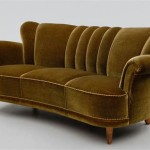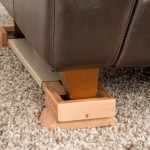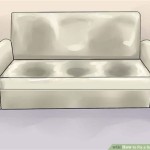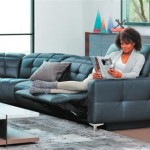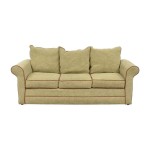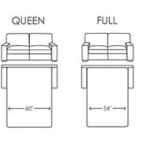Sofa Bed Size Chart: Understanding Dimensions for Informed Purchases
Sofa beds provide a versatile furniture solution for spaces with limited room. They function as a regular sofa for seating during the day and transform into a bed for overnight guests. Selecting the appropriate size sofa bed requires careful consideration of several factors, including available floor space, the intended number of sleepers, and the style preferences. A sofa bed size chart serves as a valuable resource for navigating the diverse dimension options available and making an informed purchase.
The dimensions of a sofa bed are typically expressed in terms of width, depth, and height when in the sofa configuration, and length and width when in the bed configuration. Width refers to the overall horizontal measurement of the sofa. Depth refers to the distance from the front of the sofa to the back. Height refers to the vertical measurement from the floor to the top of the sofa back. Length, in the bed configuration, is the measurement from the head to the foot of the bed. Width, in the bed configuration, is the measurement across the bed.
Variations in sofa bed mechanisms and designs lead to a broad spectrum of sizes. Understanding these variations is crucial when assessing whether a specific sofa bed will effectively serve the desired purpose within the designated space. This article will delve into the different sofa bed sizes, exploring their respective dimensions and suitability for various room sizes and needs.
Key Point 1: Standard Sofa Bed Sizes and Their Dimensions
Sofa beds are available in several standard sizes, mirroring traditional mattress sizes. These standard sizes offer a guideline for understanding the approximate dimensions to expect from each respective type. However, it's important to acknowledge that manufacturers often incorporate their unique design features and construction techniques, resulting in slight variations from these standard measurements. Therefore, always refer to the specific manufacturer's specifications for accurate dimensions before making a purchase.
A Twin Sofa Bed is one of the smallest options. It typically measures around 70-75 inches in width as a sofa and converts into a twin-size bed, which is approximately 39 inches wide and 75 inches long. This type is best suited for individual sleepers and smaller spaces, such as home offices or guest rooms with limited floor area.
A Full Size Sofa Bed is a popular choice for accommodating one or two sleepers. In sofa form, it generally ranges from 75-85 inches in width. When converted into a bed, it offers dimensions comparable to a full-size mattress, approximately 54 inches wide and 75 inches long. This size is appropriate for guest rooms that can comfortably accommodate the spread of a full-size bed.
A Queen Size Sofa Bed provides even greater sleeping space, making it suitable for couples or individuals who prefer extra room. As a sofa, it typically measures between 80-90 inches in width. When transformed into a bed, it offers queen-size dimensions, around 60 inches wide and 80 inches long. Queen-size sofa beds are well-suited for larger living rooms or dedicated guest rooms.
A King Size Sofa Bed represents the largest option, offering maximum sleeping space. In sofa form, it can range from 85-95 inches or even more in width. When converted, it provides dimensions analogous to a king-size bed, approximately 76 inches wide and 80 inches long. King-size sofa beds are typically reserved for expansive living areas or master bedrooms where spacious sleeping arrangements are desired.
Beyond these standard sizes, there are also Loveseat Sofa Beds. These are smaller than the Twin size option and are more suitable specifically for one person. These typically measure between 60-70 inches in width as a sofa and converts into a bed, which is approximately 30-35 inches wide and 70-75 inches long.
Key Point 2: Factors Influencing Sofa Bed Size Selection
Determining the appropriate sofa bed size goes beyond simply selecting based on standard mattress dimensions. Several factors must be taken into consideration to ensure the chosen sofa bed will fit comfortably within the designated space and effectively meet its intended purpose. These factors include room size, purpose, and style.
Room Size and Layout: The dimensions of the room are paramount. Before purchasing a sofa bed, accurately measure the available floor space where it will be placed. Consider the room's layout, including doorways, windows, and other furniture. Ensure that the sofa bed, both in its sofa and bed configurations, will not obstruct pathways or impede access to other areas of the room. It's helpful to use painter's tape to mark out the dimensions of the sofa bed on the floor to visualize how it will fit within the space.
Intended Use: The frequency and purpose of the sofa bed’s use will also impact the ideal size. If the sofa bed is primarily intended for occasional use by guests, a full or queen-size option might suffice. However, if it's intended for more frequent use or for accommodating couples regularly, a queen or king-size sofa bed would offer greater comfort and convenience. If the sofa bed is intended for daily use as a primary bed, prioritizing sleeping comfort and ample space is crucial.
Style and Design: Sofa beds come in a wide variety of styles, from traditional to contemporary. The style of the sofa bed can influence its perceived size within the room. For instance, a sofa bed with bulky arms and a high back might appear larger than a more streamlined, modern design. Consider the overall aesthetics of the room and select a sofa bed that complements the existing décor without overwhelming the space.
Mechanism Type: The type of mechanism used to transform the sofa into a bed could influence the overall size and footprint of the sofa bed. Some mechanisms require more clearance behind the sofa to fully deploy, while others may fold out more compactly. Popular mechanisms include pull-out, click-clack, and futon styles, each with its own set of space requirements and design variations.
Key Point 3: Measuring and Planning for Sofa Bed Placement
Before committing to a specific sofa bed, detailed measurements and meticulous planning are essential. This proactive approach helps avoid potential issues with fit, accessibility, and overall room flow. Accurate measurements should encompass both the sofa and bed configurations, allowing for a comprehensive assessment of space requirements.
Measuring the Room: Begin by measuring the length and width of the room. Note the location of doorways, windows, radiators, and any other fixed elements that may impact sofa bed placement. Pay attention to ceiling height, particularly if considering a sofa bed with a high back. Create a rough sketch of the room layout, noting all dimensions and obstacles.
Measuring the Sofa Bed Space: Carefully measure the dimensions of the intended sofa bed space. Consider the space needed not only for the sofa bed itself but also for any surrounding furniture, such as coffee tables or side tables. Ensure that there is adequate space to walk comfortably around the sofa bed in both its sofa and bed configurations. Visualize the movement patterns within the room and confirm that the sofa bed will not impede traffic flow.
Calculating Clearance: Calculate the clearance required for the sofa bed mechanism. Some sofa beds require several feet of space behind them to fully extend into a bed. Others might open forward, requiring less rear clearance but more space in front. Account for this clearance when determining the optimal placement within the room. Refer to the manufacturer's specifications for precise clearance requirements.
Considering Doorways and Hallways: Before purchasing a sofa bed, verify that it can be easily moved through doorways and hallways into the intended room. Measure the width and height of doorways and hallways, and compare these measurements to the dimensions of the packed sofa bed. If necessary, consider disassembling the sofa bed for easier transport, and assess whether reassembly is feasible within the room.
Utilizing Virtual Tools: Employ online room planning tools or augmented reality apps to visualize the sofa bed within the room. These tools allow for experimentation with different sofa bed sizes and placements, providing a realistic preview of the final result. They can also help identify potential issues with scale and proportion, ensuring that the chosen sofa bed harmonizes with the overall room design.
Successfully integrating a sofa bed into a living space requires careful consideration of size, dimensions, and the intended use. By employing a comprehensive sofa bed size chart and adhering to meticulous measurement and planning procedures, consumers can confidently select a sofa bed that seamlessly integrates into their homes, providing both comfortable seating and versatile sleeping accommodations.
Guide On How To Measure Your Space For The Perfect Sofa Bed Furl Blog

Soft Sofa And Bed Bonbon Collection
Guide On How To Measure Your Space For The Perfect Sofa Bed Furl Blog

Sofa Bed Mattress Replacements The Ultimate Guide 2024

2 Seat Sofas Guide Nabru

Jay Be Modern 2 Seater Sofa Bed With Micro E Pocket Mattress

Jay Be Retro 3 Seater Sofa Bed With Deep Sprung Core Mattress

Kuta Sofa Bed Light Grey
Looking For A Small Double Sofa Bed We Can Help Furl Blog

Understanding Sofa Bed Dimensions A Comprehensive Guides The Sleep Advisors

